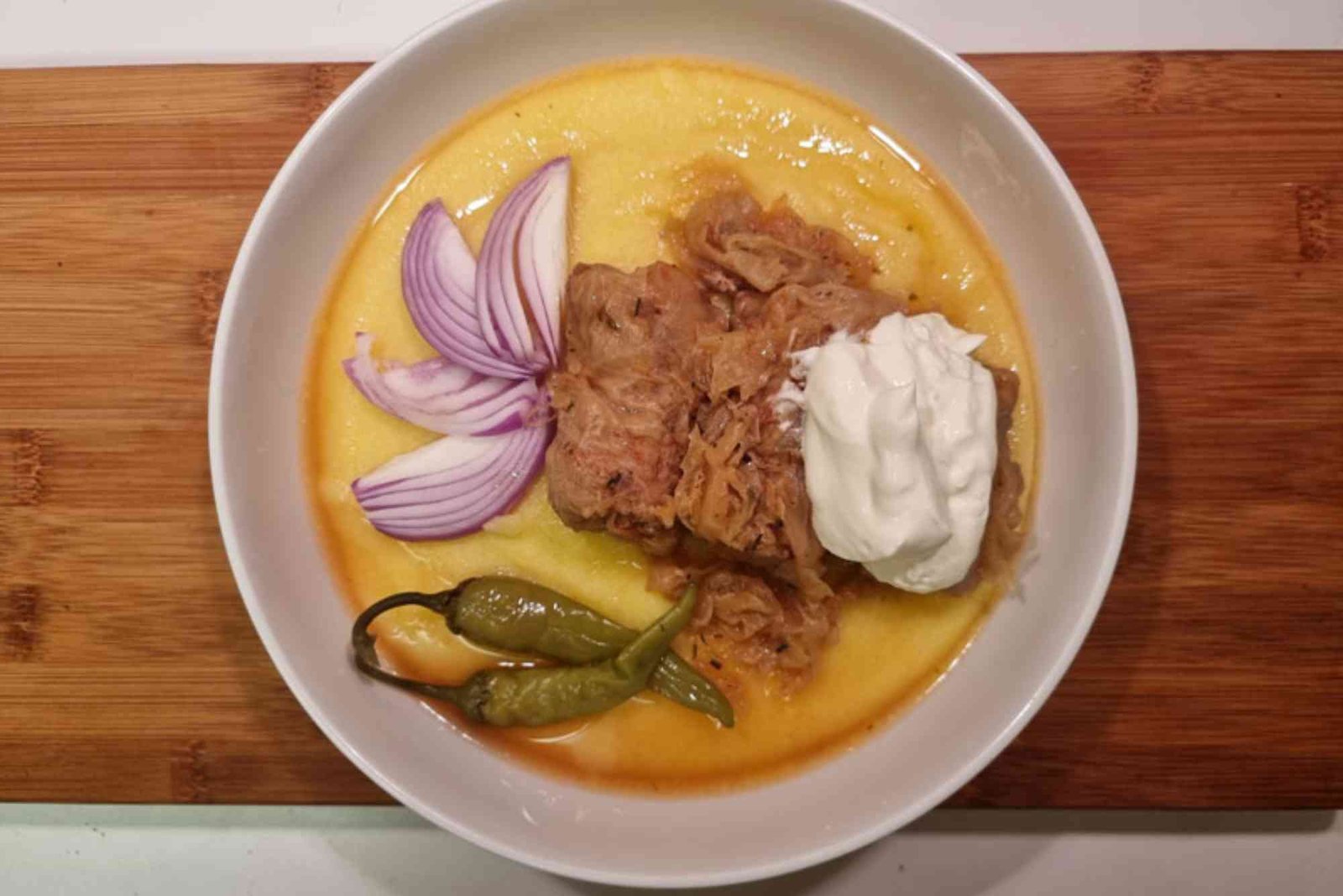Discover the Rich Flavors of Romanian Food: A Culinary Journey
Romania is not just a country of breathtaking landscapes, charming castles, and ancient history – it is also a hidden gem for food lovers. Romanian cuisine is deeply rooted in its diverse culture, offering a blend of flavors influenced by centuries of history and various regions. From hearty stews to mouth-watering desserts, Romania’s food scene is vibrant, unique, and sure to leave you wanting more. In this blog post, we’ll explore traditional Romanian dishes, their origins, how to prepare them, and where to find them. Let’s take a culinary journey through Romania!
Traditional Romanian Dishes You Must Try
If you’re new to Romanian cuisine, there are several dishes you should definitely try. The rich flavors and textures will transport you to the heart of Romania’s food culture. Here are some iconic Romanian dishes:
Sarmale (Stuffed Cabbage Rolls)
Sarmale is one of Romania’s most beloved dishes, often served at family gatherings, celebrations, and holidays. These delicious stuffed cabbage rolls are filled with a mixture of minced pork (sometimes beef or a mix of both), rice, and various herbs and spices. The rolls are slow-cooked in a pot with sauerkraut or fresh cabbage, creating a tangy, savory flavor.
Mici (Grilled Sausages)
Mici is another quintessential Romanian dish, often Romania Food referred to as “Romanian kebabs.” These grilled sausages are made with a blend of beef, lamb, and pork, and are seasoned with garlic, pepper, and thyme. The sausages are usually served with mustard and fresh bread – the perfect street food for any occasion!
Ciorbă de burtă (Tripe Soup)
A hearty and flavorful soup, Ciorbă de burtă is made with beef tripe, vinegar, and garlic. This traditional Romanian dish is rich in flavor, tangy, and often served with a dollop of sour cream. It’s an excellent comfort food, particularly enjoyed during cold winters.
Mămăligă (Polenta)
Mămăligă is a staple side dish in Romanian cuisine. Made from cornmeal, similar to Italian polenta, it is often served as an accompaniment to stews, meats, or cheese. The creamy, slightly firm consistency makes it the perfect side to balance out hearty Romanian dishes.
Papanăși (Romanian Donuts)
For dessert, you can’t go wrong with Papanăși, a deep-fried donut-like pastry filled with sweet cheese and topped with sour cream and jam. This delicious dessert is a staple in Romanian cuisine, and it’s hard to resist the combination of crispy, sweet, and creamy flavors.
The History and Cultural Significance of Romanian Food
Romanian food is the product of centuries of cultural exchange, blending flavors and techniques from neighboring countries and ancient civilizations. Historically, Romania’s cuisine has been influenced by various empires, including the Ottoman Empire, the Austro-Hungarian Empire, and the Slavic nations to the east.
Ottoman Influence: The Ottoman Empire’s influence on Romanian cuisine is apparent in dishes such as kebabs, baklava, and pilaf. The Ottomans brought spices like cinnamon, cumin, and paprika to Romanian kitchens, which are now integral to the country’s culinary tradition.
Hungarian Influence: Romania shares a border with Hungary, and Hungarian food has had a significant impact on the Romanian kitchen. Paprika, goulash, and hearty stews are common in both countries.
Slavic Influence: The Slavic peoples to the east of Romania have also contributed to the local food culture, particularly with dishes like dumplings, pickled vegetables, and fermented foods.
Romanian cuisine is a reflection of the country’s diverse history, and every dish tells a story of its cultural evolution.
How to Make Traditional Romanian Sarmale
Now that you’re familiar with some of the top dishes, let’s dive into how to make one of Romania’s most iconic meals – Sarmale (stuffed cabbage rolls). Here’s a simple, step-by-step recipe:
Ingredients:
- 1 large cabbage (or 2 smaller ones)
- 1 lb ground pork (or a mix of pork and beef)
- ½ cup rice
- 1 large onion, finely chopped
- 2 tbsp tomato paste
- 1 tbsp paprika
- 1 tsp thyme
- Salt and pepper to taste
- 4 cups sauerkraut (or fresh cabbage if you prefer)
Instructions:
Prepare the Cabbage
Start by blanching the cabbage to soften the leaves. If using fresh cabbage, carefully remove the core and freeze the cabbage for 24 hours before peeling the leaves. If using sauerkraut, rinse it thoroughly to reduce the saltiness.
Prepare the Filling
In a large bowl, combine the ground meat, rice, finely chopped onion, paprika, thyme, salt, and pepper. Mix thoroughly to combine. This will be your stuffing for the cabbage rolls.
Stuff the Cabbage Leaves
Take one cabbage leaf and place a spoonful of the filling in the center. Roll the leaf around the filling, folding the edges to seal the roll. Repeat this step until all the filling is used up.
Layer the Rolls in a Pot
In a large pot, place a layer of sauerkraut at the bottom, followed by a layer of sarmale. Continue layering until all the rolls are in the pot. Add the tomato paste and cover the rolls with water. Bring to a simmer and cook for about 3 hours, checking periodically to ensure there’s enough liquid.
Serve and Enjoy
Once the sarmale is tender and flavorful, serve them with sour cream and fresh bread. Enjoy your homemade Romanian feast!
Romanian Food Culture and Dining Etiquette
Romanian dining culture is warm, inviting, and centered around family and community. Meals are often lengthy and involve multiple courses, with food being served in large quantities to ensure everyone has enough to eat. Hospitality is a cornerstone of Romanian culture, and guests are always offered food and drink.
Meals are a social event: In Romania, meals are not just about eating; they’re about spending time together. Whether it’s a traditional Sunday lunch or a festive occasion, food is the glue that binds families and friends.
Mealtime etiquette: When dining in Romania, it’s customary to start with a toast, particularly with țuică (a traditional Romanian plum brandy). It’s also polite to wait for the host to start eating before you dig in.
5. FAQs on Romanian Food
Q: What is Romania’s national dish?
A: Romania’s national dish is Sarmale (stuffed cabbage rolls), which is a hearty and flavorful dish often served during celebrations and family gatherings.
Q: Where can I try traditional Romanian food?
A: Traditional Romanian food can be found in local restaurants (called “casă de masă”) or at street food vendors. Major cities like Bucharest and Cluj-Napoca offer many options to taste authentic Romanian dishes.
Q: Is Romanian food spicy?
A: Romanian food is generally not spicy, but it is rich in flavor. Herbs and spices like garlic, dill, thyme, and paprika are commonly used to season dishes.
Romanian food is a delightful fusion of flavors, textures, and traditions, with dishes that tell the story of the country’s rich cultural history. Whether you’re indulging in hearty Sarmale, savoring the grilled goodness of Mici, or enjoying a sweet Papanăși, Romanian cuisine has something to offer everyone. So, the next time you’re in Romania or looking to try something new in your kitchen, don’t miss out on these mouth-watering dishes!



